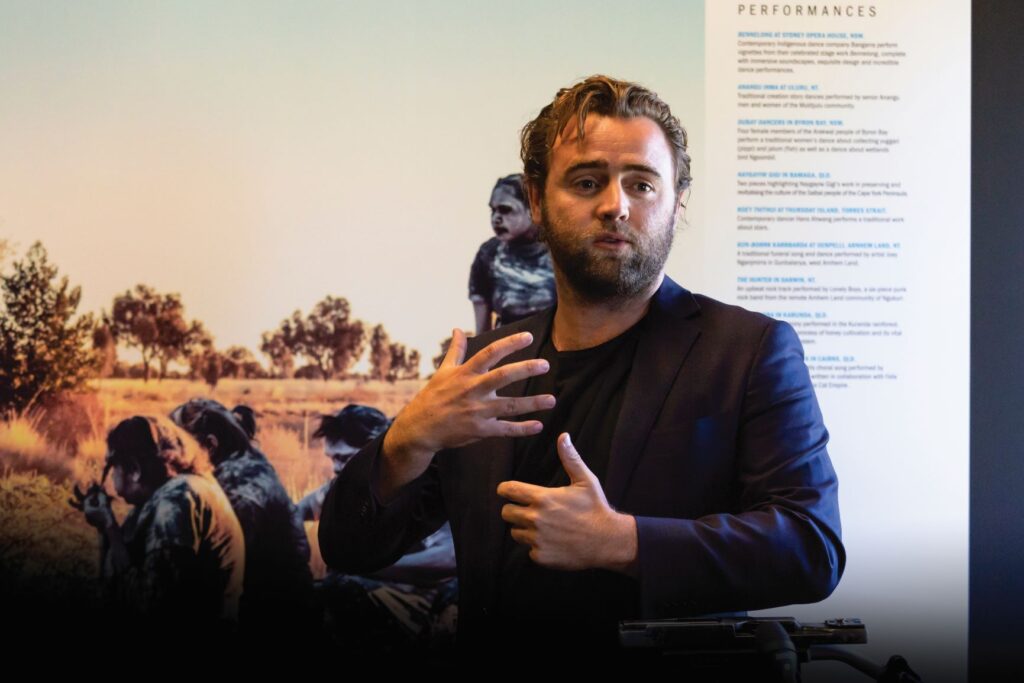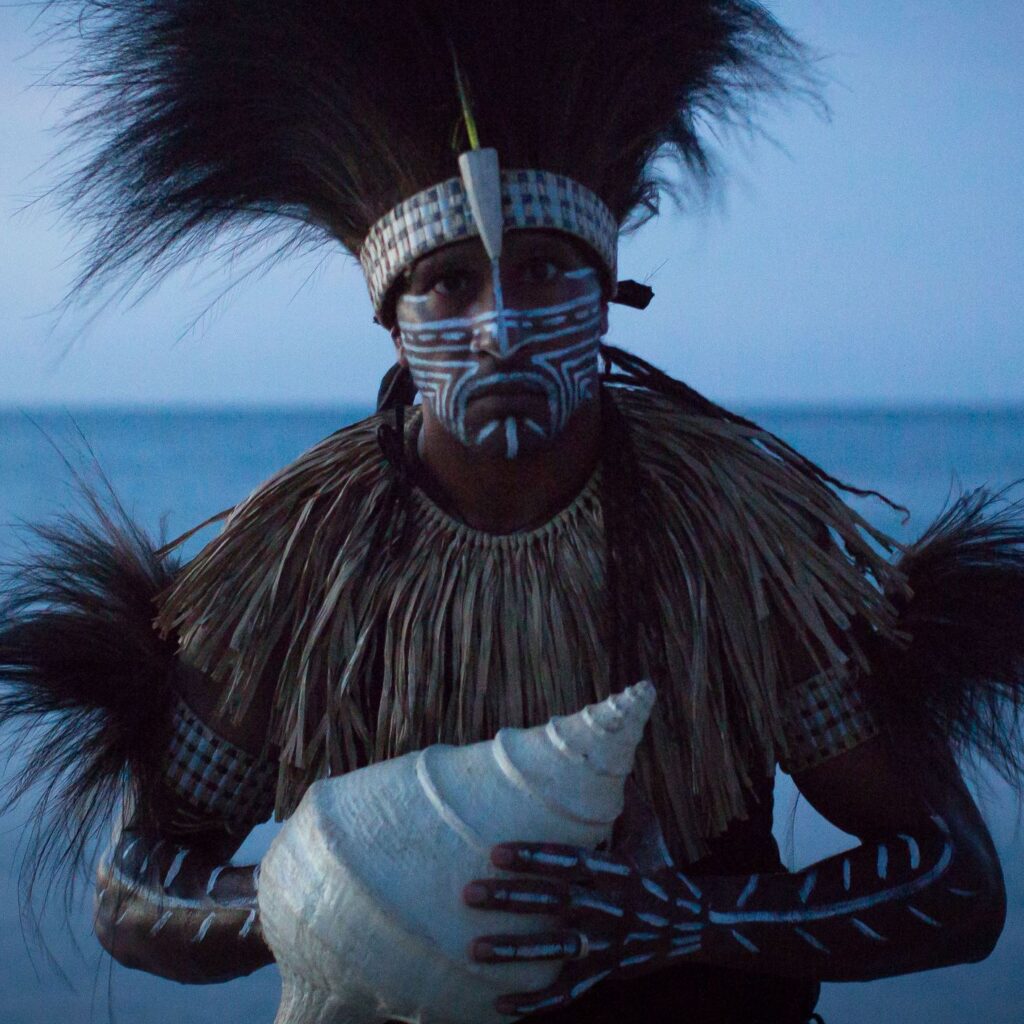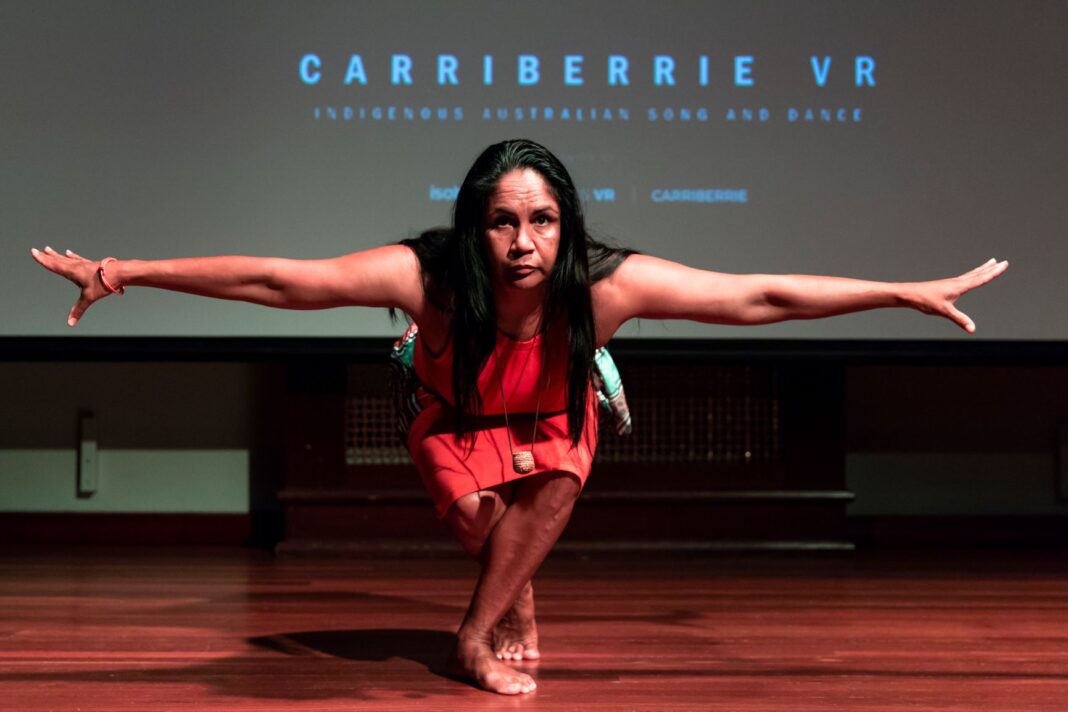After stepping through the front doors at the National Film and Sound Archive (NFSA), you’re ushered into a dark room.
And while you’re in for a cinematic experience, this isn’t your standard Arc Cinema screening.
Sitting down, you put on a virtual reality (VR) headset and get whisked across the country, bearing witness to an array of scenery from swampland to desert to a theatre stage, and experience the cultures of first Australians residing in these varied locations.
This is the NFSA’s newest installation, Carriberrie, a VR celebration of Indigenous Australian dance and song showcasing a breathtaking range of locations and performances.

The 14-minute film features 156 dancers and 36 performances, representing nine cultural groups, and encompasses both traditional ceremonial song and dance through to contemporary and modern expressions. Carriberrie documents the vast breadth and depth of Indigenous dance and delivers it to Canberra audiences in a way never experienced before.
From a work by Bangarra at the Sydney Opera House to intimate renditions at Uluru and the Arnhem wetlands, Carriberrie allows viewers to be immersed in these environments and in close proximity to the artists.
With 2019 being the UN Year of Language, it’s a perfect time to display this beautifully crafted work that celebrates what is a true universal language – dance.
NFSA CEO Jan Müller said he felt it was important to be able to share Carriberrie with Canberra audiences via the Archives.
“This is about dance, tradition and Australian culture.
“Dance is actually the first language of our people; it makes sense to do something like this at the NFSA that is the safeguard of the cultural heritage of this country,” Müller said.
He said the NFSA acts as a custodian of a significant collection of Aboriginal and Torres Strait Islander works.

“We believe in the power of stories to transcend cultural boundaries and build a deeper understanding and respect.
“Carriberrie achieves all of that, using cutting-edge immersive technologies, which the NFSA is now collecting and preserving, alongside traditional audiovisual formats,” he said.
Initially conceived by producer and director Dominic Allen, Carriberrie was developed in extensive consultation with Aboriginal cultural advisors, and produced by a team featuring multiple Indigenous key crew members.
“This project has been an expansive, wonderful journey into traditional and modern first living culture in this country.
“It’s a great witness to a very robust, impressive and really beautiful culture that I’ve been so blessed to get a little bit closer to over the process of making this.
“A lot of Australians are fascinated by this and would love to get out to country, and learn more about the wonderful culture that’s been here for so long; and dance is a really great way to be able to communicate and understand that,” Allen said.
He said he’s thrilled Carriberrie is being displayed at the NFSA, where alongside being shown on state of the art VR headsets, there will be interactive large room projections and, for the first time, never-before-seen content in the form of full dances available on immersive iPads.
“Carriberrie has never been screened in such a thorough and progressive way, and we are looking forward to witnessing audiences immersing themselves in the scope of Carriberrie’s First Nations song and dance,” he said.
Carriberrie is on at the NFSA until 1 June, 11am-2pm daily. Viewing is free with no bookings required; nfsa.gov.au
For more:



